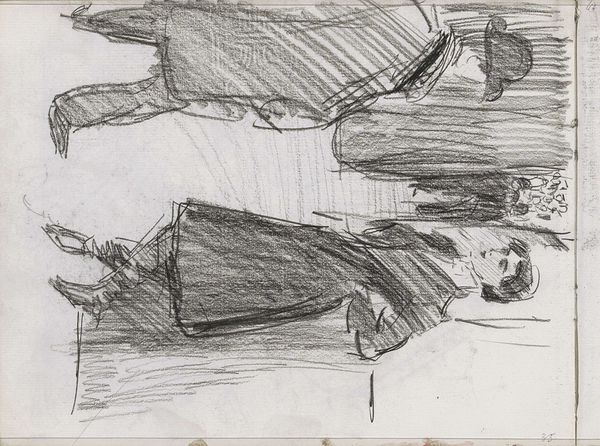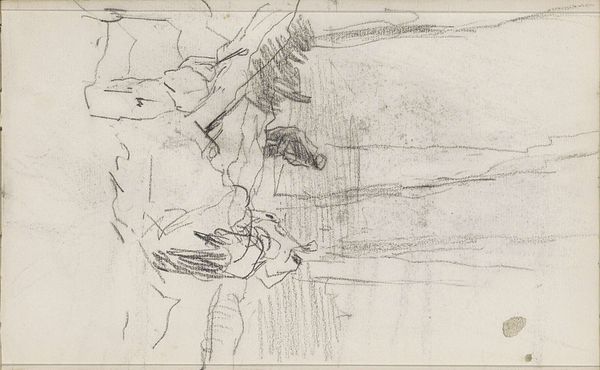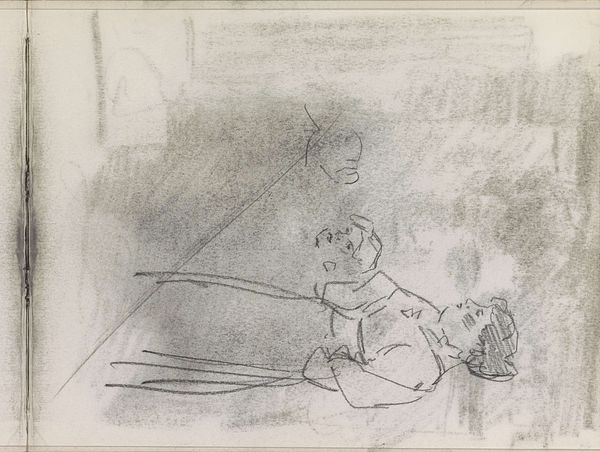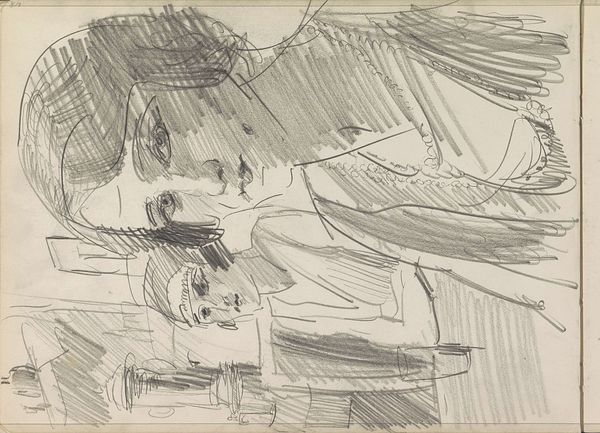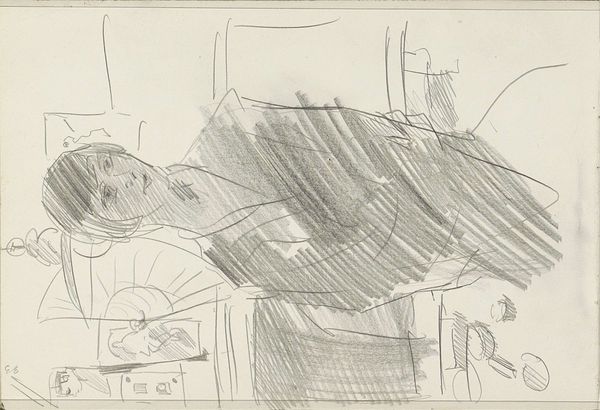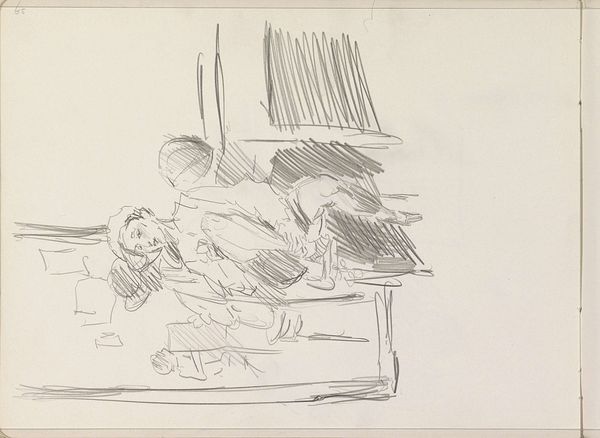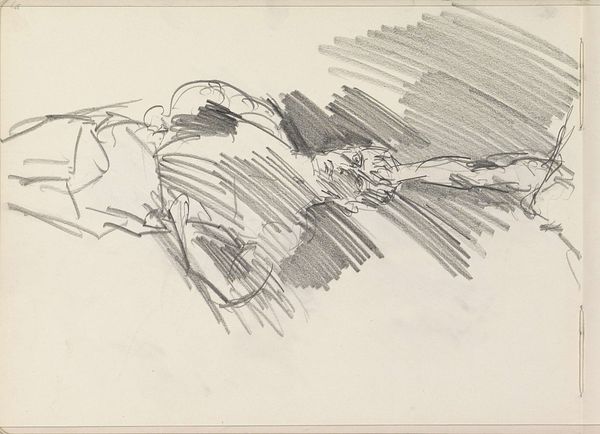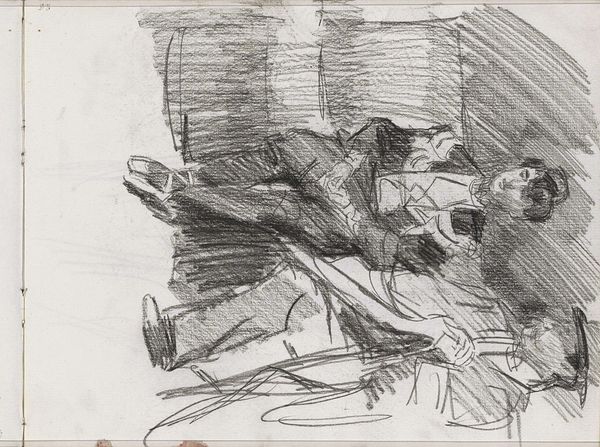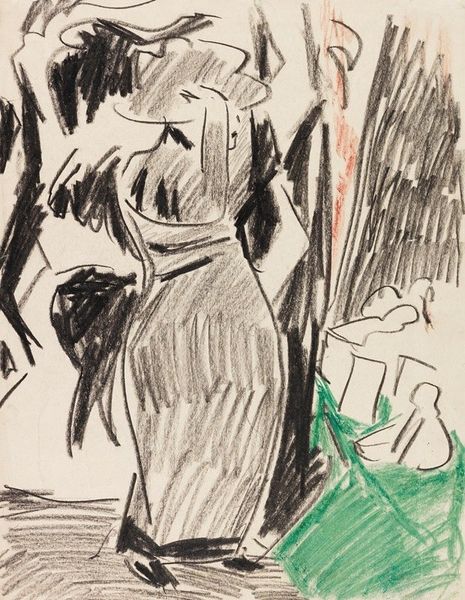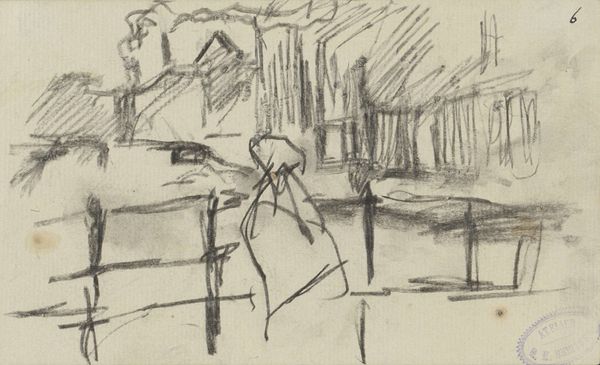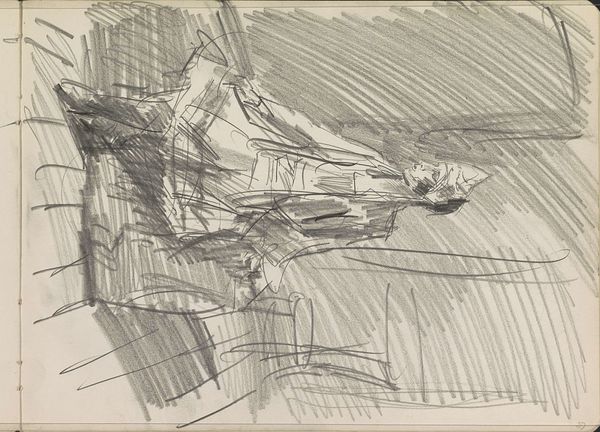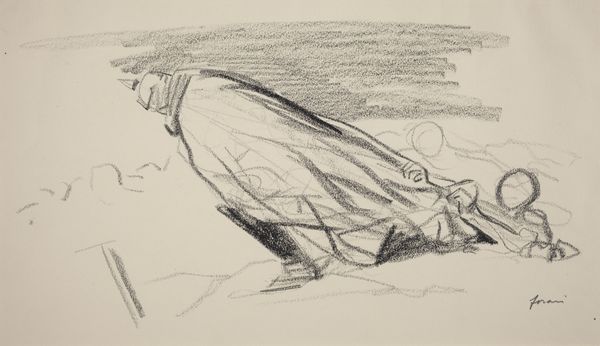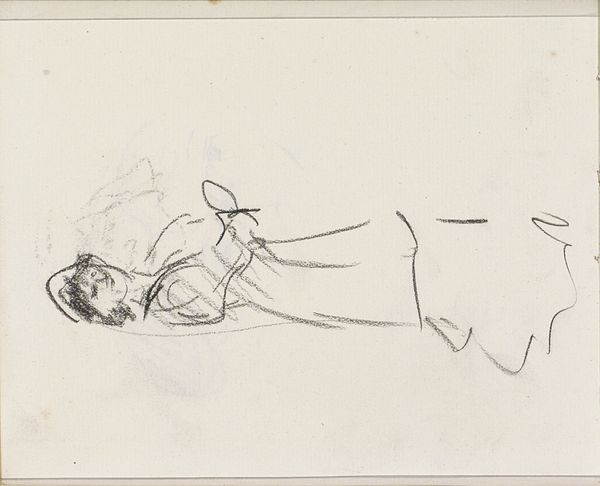
#
amateur sketch
#
light pencil work
#
dog
#
incomplete sketchy
#
possibly oil pastel
#
acrylic on canvas
#
ink drawing experimentation
#
underpainting
#
detailed observational sketch
#
watercolor
#
initial sketch
Copyright: Rijks Museum: Open Domain
Curator: This is "Woman with a Dog on the Beach," by Johan Antonie de Jonge, likely created sometime between 1884 and 1927. Editor: It feels unfinished, a fleeting impression captured in soft hues. The lines are tentative, yet there's a certain vulnerability in its rawness. Curator: Indeed. The sketchy lines and perhaps watercolor medium create an atmosphere of immediacy, suggesting an intimate glimpse into a private moment. Notice the dog; it's rendered almost as an extension of the woman herself, sharing her quiet observation of the sea. The horizon is implied, a vertical stack of colours. This positioning can signal that humans and animals must navigate forces, rather than have dominion over nature. Editor: That’s interesting! The composition strikes me as deliberately unconventional, not centered but decidedly off-kilter. It makes me wonder if the artist intended to disrupt the traditionally idealized depiction of women, hinting at the more transient reality they experience? The sketchy nature perhaps indicates a woman not yet allowed into 'finished' history? Curator: I see that reading as quite plausible. But on the contrary, maybe it elevates the subject? Think about the beach as a place of threshold. Sand doesn’t preserve a memory very well. The impermanence, like memory itself, lends a quiet, introspective quality to the artwork. The muted colours – predominantly blues, browns, and hints of red – evoke the peaceful tranquility of a day spent by the sea. The dog as *Psychopompos*, perhaps? Editor: While that may be true, such tranquil settings aren't immune from sociopolitical forces. The historical backdrop of de Jonge's era cannot be ignored. The positioning of the woman, perhaps a commentary on the liminal space women occupied within society at the time – simultaneously present, yet perpetually on the margins? This could also have links with ideas of early modern womanhood. Curator: An astute point, that contextual understanding is key. Yet, it could also simply express a moment of genuine connection, captured swiftly between woman, animal, and elements. We find the potential of both public identity and domestic identity here. Editor: Ultimately, the beauty lies in these very ambiguities. It is these different readings that create a lasting dialogue. Curator: Yes, and perhaps that speaks to our ability to engage personally with artworks from other eras, finding reflections of our own experiences within these simple sketches.
Comments
No comments
Be the first to comment and join the conversation on the ultimate creative platform.
